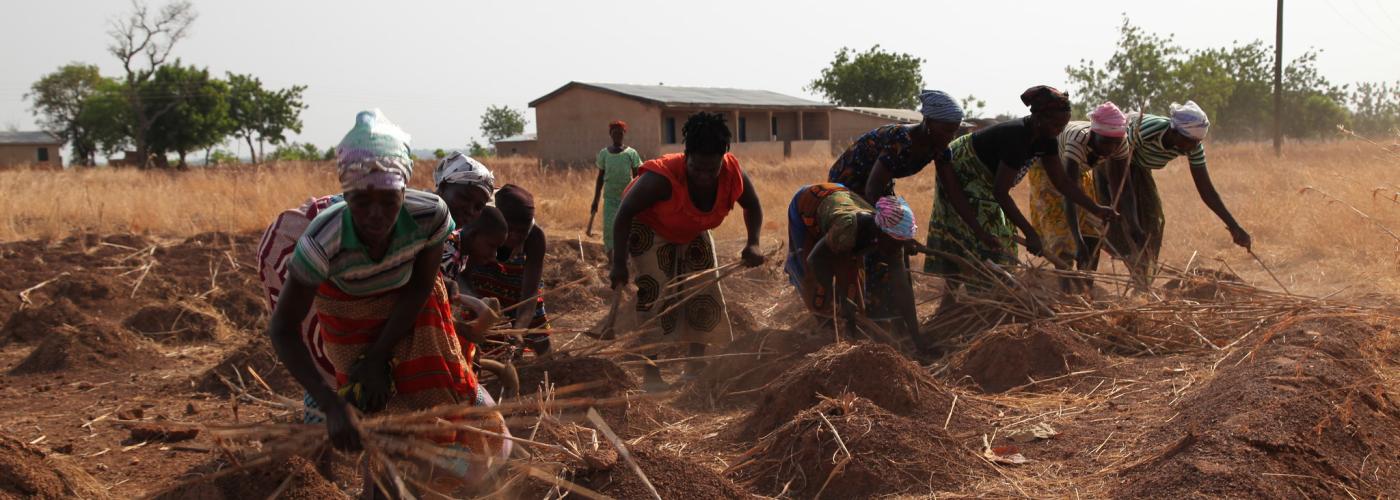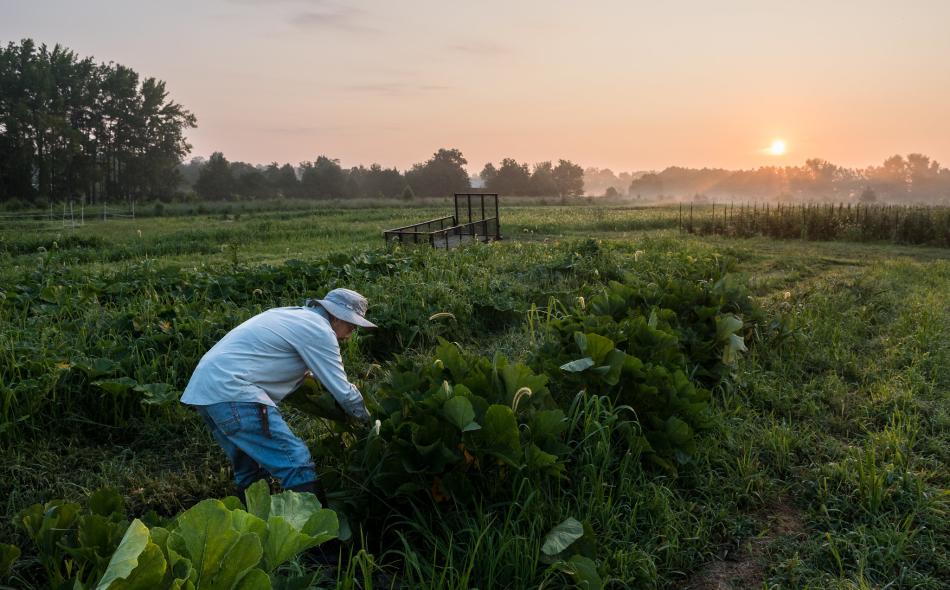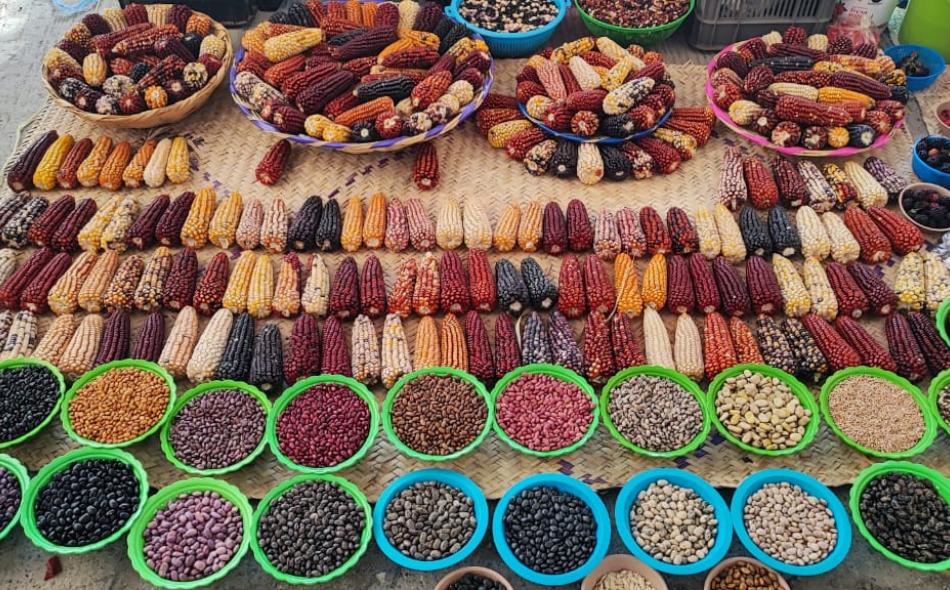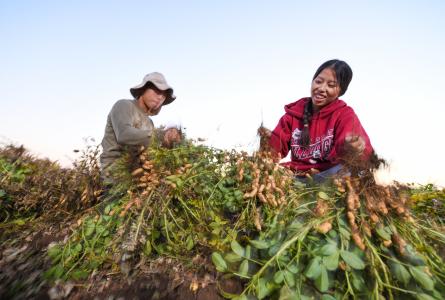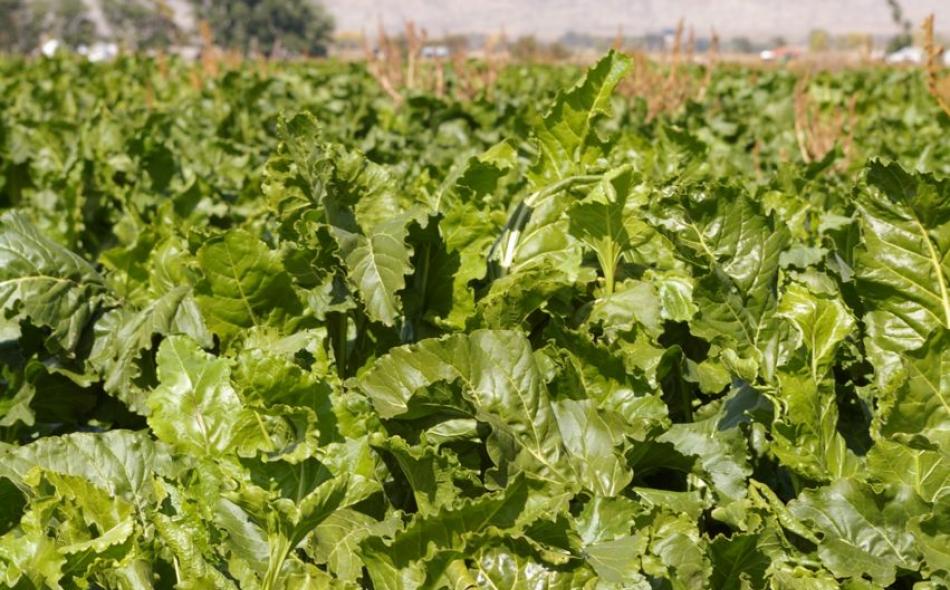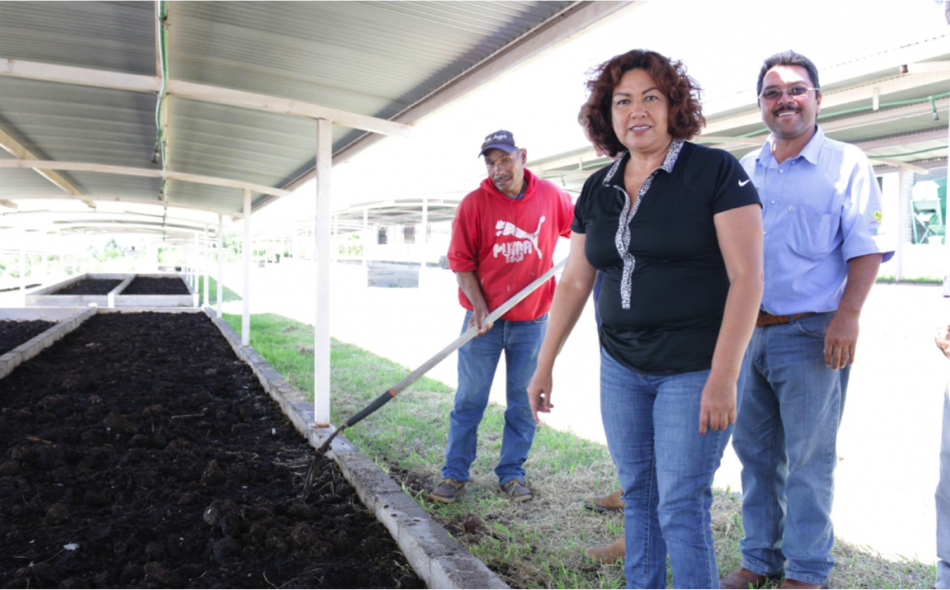Why agroecology?
As a systems approach, agroecology addresses the problems of the food system from field to plate, covering all activities and actors involved in growing, processing, selling and preparing food and the impacts on the natural resource base on which food systems depend, both now and in the future. Agroecology puts the wellbeing of people — producers, workers and end users of crops and products — and the planet at its center.
Agroecology is fundamentally different from other approaches to agriculture and food systems development. Whereas the current industrialized system is extractive and exploitative, agroecology recognizes the interdependence of living systems and honors the principles of balance, diversity, harmony and respect. Agroecology creatively enables those involved in the food systems to connect with each other and solve problems specific to their unique situations.
We want healthy, fair and sustainable food, farm and trade systems: Agroecological transitions offer us the path forward.
Agroecology in Movement
An articles series highlighting the work of our colleagues around the world to build agroecological practices, science and movements that demonstrates how, as a systems approach, agroecology can address the multitude of problems within our food system from field to plate. Read more articles in the series here.
Our current food system
The transnational, corporate-driven food system is exploitive and extractive
Increasingly, our global food system is dictated largely by transnational corporations, pursuing the cheapest farm commodities and labor in order to sell into an international market, with little regard for farmers or workers, rural communities or the environment. As this system extracts food and wealth, it undermines food systems that support and empower farmers and workers, meet health and nutritional needs, protect clean water and air and benefit communities.
The drivers of our current system
This system is propped up by local, national and international policies through an assortment of subsidies, preferences, loopholes and regulatory frameworks — often enshrined in hard law through trade agreements. As global agribusiness and food companies have consolidated, their political power and influence has grown, often blocking attempts to support food systems rooted in agroecology.
Who suffers? Who benefits?
As fewer companies control food production, they are able to lower the prices they pay farmers and the wages paid to workers. Weak health, environmental and worker protections result in toxic pesticide exposures and dangerous working conditions. The unrelenting push to expand agriculture commodity production has led to massive deforestation and land displacement. The social and environmental costs of this system are absorbed by the people and communities caught in it, as these global companies’ profits rise.
Why does this harmful system continue?
Big agribusiness and food companies have become powerful political players, influencing policy and politicians and fighting against protections for rural well-being, the environment and health. Enormous advertising and public relations teams advance a narrative of feeding the world’s hungry, environmental sustainability and supporting farmers. Their global reach challenges individual communities who try to fight back.
Agroecology - the next evolution in food systems, from the International Panel of Experts on Sustainable Food Systems (IPES-Food)
The transition to agroecology
What is agroecology?
Agroecology is an evolving approach that integrates transdisciplinary knowledge, food producers and eaters’ practices and social movements, while recognizing their mutual dependence. Agroecology is necessary to bring about just, sustainable food system transitions — from production to consumption to waste management — to ensure local and regional level food security across the world. Agroecology builds ecological, social and economic resilience rooted in mutual respect for various cultural food traditions of local community members.
Agroecology is a science, a practice and a movement.
As a science, agroecology is: 1) the integrative study of the ecology of the entire food system, encompassing ecological, economic, social and political dimensions; 2) the application of ecological concepts and principles to the design and management of sustainable food systems; and 3) the integration of research, education, action and change that brings sustainability to ecological, economic and social aspects of food systems.
As a set of agricultural practices, agroecology seeks ways to improve agricultural systems by harnessing natural ecological processes and ecosystem functions; creating beneficial biological interactions and synergies amongst the components of agroecosystems; minimizing synthetic and toxic external inputs as well as waste production; maximizing functional biodiversity; and strengthening biological regulation in agroecosystems. Practices are designed to sustainably reconcile social, economic and environmental challenges to community agricultural development.
As a movement, agroecology seeks to transform agriculture to build locally relevant, resilient and sustainable food systems that strengthen the economic viability of rural areas based on short marketing chains, equity, and both fair and safe food production. This involves supporting diverse forms of smallholder food production and family farming, food providers including farmers, pastoralists, fishers and gatherers. Specific aims of the movement include food sovereignty, respect for and preservation of local knowledge, social justice, maintenance of local identity and culture, and rights to local and Indigenous seeds and breeds.
The history of agroecology
The ideas, practices and the systems thinking that inform agroecological approaches go back to Indigenous cultures across the world. What we know as agroecology today began developing close to one hundred years ago along two parallel tracks: In one, biological scientists began studying the application of ecology in agriculture. Along the other, food producing communities sought alternatives — both by reclaiming systems lost and building upon old systems with knowledge gathered though new experiences — to the chemical farming that was affecting local biodiversity, soil health and food quality. These alternative sets of agricultural practices were named differently in different regions, but all drew on the principle of living with nature. Learn more about the history of agroecology in our Q&A.
The coming together of scientists and food producing communities, learning from each other and exploring solutions to the ecological, socioeconomic and political problems of the current food systems, has resulted in a comprehensive understanding of agroecology as “the ecology of food systems,” with its focus on food sovereignty.
The guiding principles of agroecology
In 2019, the U.N. Food and Agriculture Organization (FAO) developed a set of agroecological principles known as the FAO’s 10 element of agroecology. In response to a request from the U.N. Committee on Food Security (CFS), the High-Level Panel of Experts (HLPE) to the CFS developed a set of recommendations on the best possible pathways for just and sustainable food system transformations, based on 13 agroecological principles that were developed, outlined and agreed upon by the HLPE’s international experts.The 13 agroecological principles are aligned with and complementary to the FAO’s 10 elements of agroecology, and they both take a holistic approach in considering transformations towards sustainable food systems. FAO’s 10 elements of agroecology came out of regional consultations around the world and help to structure its work with member countries and with other international and U.N agencies. The 13 key principles were developed by the HLPE through an extensive literature review of the concepts, definitions and principles of agroecology. These principles are based on agroecology’s three constituent elements — a set of practices, a science and a movement — and developed a scientific basis for a set of policy recommendations for the CFS. The 13 principles also incorporate sociocultural and political-economic considerations and governance concerns from local to global scales. At their best, agroecological production practices focus on a holistic approach in keeping with all 13 of the agroecological principles outlined by the HLPE to simultaneously ensure multiple benefits for ecology, all food system actors and local communities.
Upholding these principles is crucial for the development of alternatives to industrial agriculture through movement building.
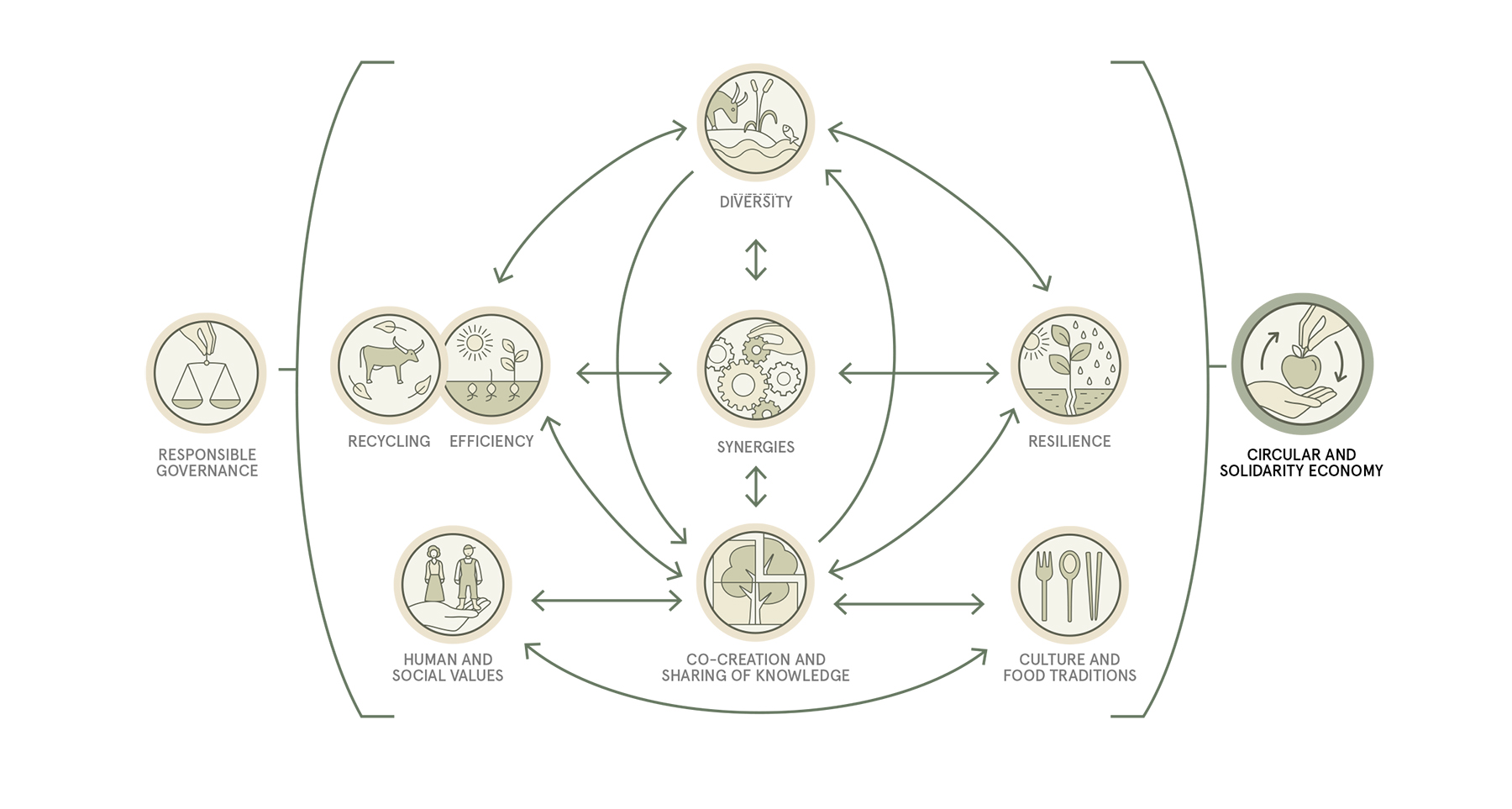
Source: Food and Agriculture Organization of the United Nations, 2018, FAO’s 10 Elements of Agroecology. Reproduced with permission.
Who and what benefits from agroecology?
While agroecology can improve farmers’ yields and incomes, its value goes well beyond that. Agroecological transformations, from production to consumption and waste management, offer us a pathway to address multiple crises, through just food systems transitions that are supported by and also help build food democracies. Such food systems transformations are necessary for ensuring that consumers can afford healthy, culturally appropriate and nutritious food; for ensuring economic viability for food system workers; and for revitalizing rural areas and enabling fair trade in agricultural commodities and other crops.
Case studies
Agroecology has emerged as a set of practices based on principles that guide how to produce sustainably, and at the same time, manage the social relationships that govern food production, processing exchange and waste management. Learn more about our work on agroecology in the case studies below.
For Feminist Agroecologies. Republished with permission. Video Credit: CAWR and AagroecologyNow
Discover more about the benefits of agroecology:
- Read case studies from our partners Alliance for Food Sovereignty in Africa (AFSA).
- Read "Agroecology: Key to agricultural resilience and ecosystem recovery."
- Watch agroecological transitions in Laos supported by our partners Asian Farmers Association.
- Read the case study on agroecological transformations centered around women’s empowerment being carried out by our partners The Tamil Nadu and visit their website, Women’s Collective (India).
- Learn more in our agroecology Q&A.
Major structural change is possible
Agroecological transitions are taking place in many developing countries and some developed countries. For example, France, Germany and Switzerland promote some version of agroecology as part of their bilateral aid. However, while there are several partial government initiatives at state level or sub-national level, no country has fully adopted agroecology at the national level.
Agroecology is also being advanced in some select countries through an action plan that FAO has developed in collaboration with partners, known as the scaling up agroecology initiative (SUAI), a platform set up in 2018 to catalyze cooperation on agroecology within the U.N. system. In India, Senegal and Mexico, SUAI is providing technical support to countries in developing policy processes. Learn more about the policy support needed to scale up agroecology around the globe.
For agroecological transitions to occur, we must:
- Regulate the extractive, exploitative, corporate-driven food system: Read our Emissions Impossible series for our mounting case for regulating the system of industrialized production of meat and dairy.
- Redirect public finance toward agroecological transformations: Right now, an international campaign, led by African civil society organizations, is underway demanding that Western governments and philanthropists divest from industrial agriculture and the Green Revolution in African and redirect funds towards agroecology.
- Rethink global trade systems: Trade rules need to be designed to shelter agroecological production from floods of cheap imports produced unsustainably, and to promote (rather than restrict) seed sharing and cooperation. This would mean reforming trade agreements so that they prioritize public policies that advance agroecology, climate action and human rights over commercial flows of goods, services and investment.
Get Involved
- Learn more about the campaign underway to redirect funding from industrial agriculture to agroecology in Africa.
- Read our comprehensive agroecology Q&A to dive even deeper into agroecology.
- Discover democracy in agriculture in action through the development of community food systems in Minnesota.
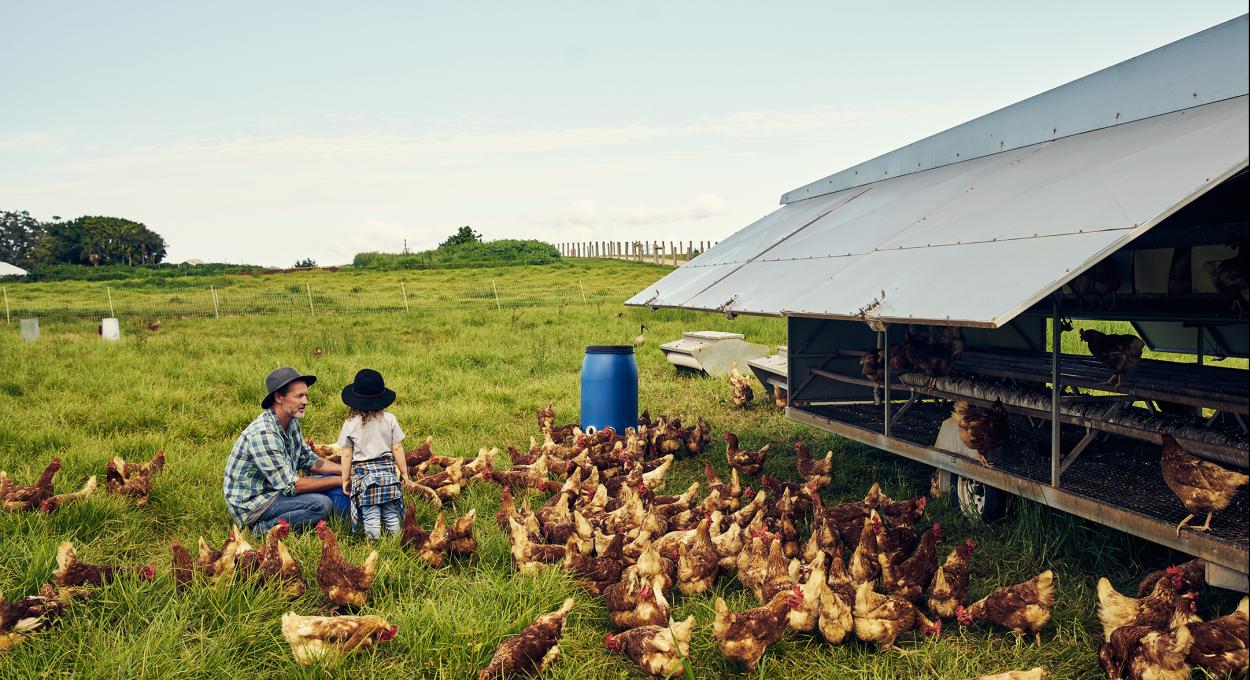
The path forward is possible in our lifetime.

